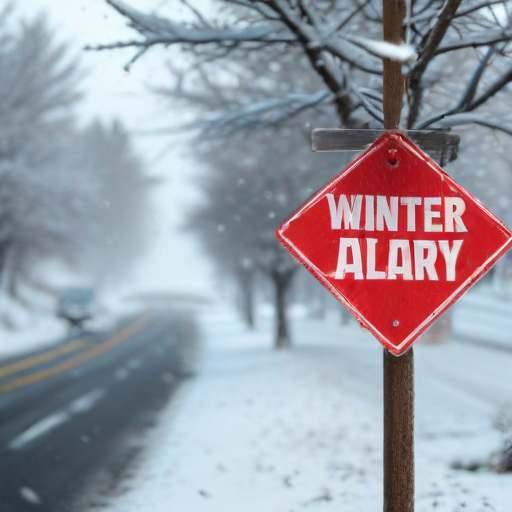A potent winter storm is forming near the Pacific Northwest, bringing with it threats of powerful winds, a significant amount of snow in mountainous areas, and heavy rainfall across California, Oregon, and Washington. This weather phenomenon, termed a “bomb cyclone,” is accompanied by an atmospheric river, which will create conditions akin to a “massive firehose” for lower elevations and a “giant snow gun” at higher altitudes, according to reports. The storm is predicted to persist through Friday and into the weekend, potentially inundating some areas with up to 15 inches of rain.
Meteorologist Sara Purdue from the National Weather Service noted that this storm marks the first significant winter weather event of the season. As the bomb cyclone progresses, it is also expected to cause heavy snowfall and gusty winds in regions including the Great Lakes, central Appalachians, and parts of the Northeast; significant rain and flooding are anticipated along the Gulf Coast.
Northwest California is under a high-risk rainfall outlook as issued by NOAA’s Weather Prediction Center, mainly due to the increased threat of flooding in the affected areas. Recent wildfire-affected regions could be particularly susceptible to mudslides and rockslides.
Warnings have been set in place from the Washington Cascades down to Northern California, with expected snow accumulations reaching between 12 to 24 inches for elevations above 3,000 feet. Wind gusts for coastal regions could reach 70 mph, prompting concerns over tree damage and power outages.
Travel challenges are anticipated, especially in mountain passes where heavy snow and whiteout conditions could render travel nearly impossible. The California Department of Transportation is advising motorists to prepare adequately, including the use of snow chains, regular vehicle checks, and carrying emergency supplies such as blankets and non-perishable food.
Nationwide, a weather system is triggering sustained winds and heavy snow across several states, contributing to flash flood risks in parts of Louisiana and Florida.
Understanding the mechanics of these storms can add context to their severity; bomb cyclones undergo a rapid intensification process known as bombogenesis, marked by a sharp drop in atmospheric pressure—a defining factor that enhances the storm’s power. Similarly, atmospheric rivers play a crucial role in extreme precipitation events by transporting vast amounts of moisture from tropical regions.
As communities brace for the impacts of this major winter storm, it’s important to focus on preparedness and safety measures to navigate the upcoming weather challenges.
This storm could serve as a reminder of the seasonal shifts that impact the Pacific Northwest, encouraging residents to adopt proactive measures for winter weather preparedness and resilience. The understanding generated from storm patterns could also foster awareness about the importance of weather safety in our daily lives.
